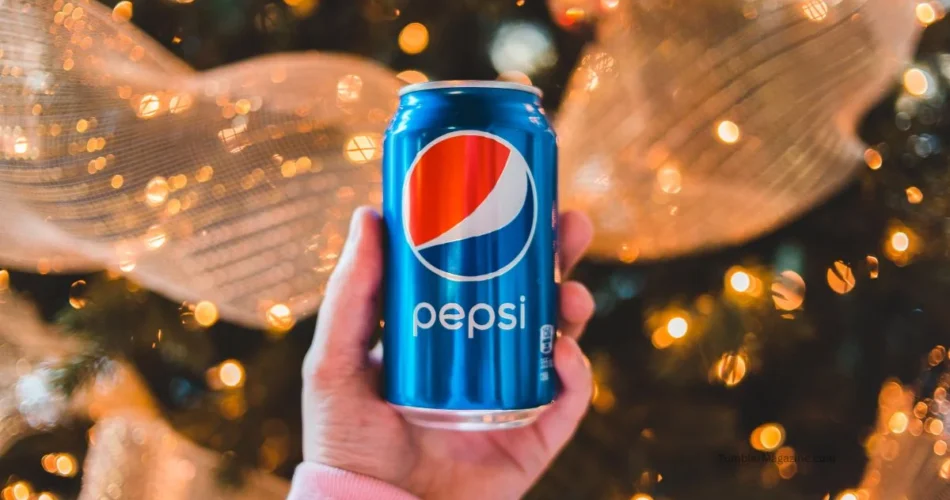Welcome to our deep dive into the world of soda cans! These ubiquitous containers have become an integral part of modern beverage consumption, but have you ever stopped to consider their environmental impact? Join us as we explore the history, composition, recycling practices, and design aspects of soda cans. Let’s crack open a can of knowledge and sip on some fascinating information about these aluminum wonders!
Table of Contents
History and Standard Sizes
Soda cans have a rich history that dates back to the mid-20th century when they revolutionized beverage packaging. The first aluminum can was introduced by the company Kreuger Brewing in 1935, forever changing how we enjoy our favorite drinks.
Over the years, standard sizes for cans have evolved to meet consumer demands and preferences. The most common size in the market is the 12-ounce can, perfect for single servings and easy portability. However, you may also come across larger formats like 16 or 24 ounces for those who crave more refreshment in one go.
These standardized sizes not only cater to convenience but also help streamline production processes for manufacturers worldwide. So next time you crack open a cold soda, remember the journey these cans have taken to become a staple in our daily lives.
Composition and Fabrication Process
When it comes to soda cans, the composition and fabrication process play a crucial role in their overall environmental impact.
Soda cans are typically made from aluminum, which is lightweight and easily recyclable. The process begins with bauxite ore extraction, followed by refining it into alumina before smelting it to create aluminum.
Once the aluminum is ready, it gets rolled into thin sheets that will eventually form the body of the can. These sheets are then coated with a protective layer to prevent corrosion and preserve the flavor of the soda inside.
Next comes shaping the flat sheets into cylindrical forms through a series of intricate processes like cupping, drawing, trimming, and necking. This meticulous fabrication ensures that each can meets quality standards before being filled with delicious carbonated beverages.
Understanding how cans are composed and fabricated sheds light on the intricate journey these containers go through before reaching our hands for refreshment.
Filling and Opening Mechanisms
When it comes to soda cans, the filling and opening mechanisms play a crucial role in ensuring convenience for consumers. These mechanisms are designed to securely seal carbonated beverages inside the can while also allowing for easy accessibility when it’s time to enjoy your drink.
The filling process involves injecting the beverage into the can at high speeds, which helps maintain its freshness and carbonation levels. Once filled, a lid is then placed on top of the can before it is sealed shut using specialized equipment.
To open a can, most designs feature a pull-tab or stay-tab mechanism. The pull-tab requires pulling back a tab to create an opening, while stay-tabs involve pushing down on a metal tab until it breaks free from the can’s rim.
These mechanisms have evolved over time to provide efficient sealing and convenient opening methods that enhance the overall drinking experience for consumers worldwide.
Recycling Practices
Recycling soda cans is a crucial step in reducing the environmental impact of these popular beverage containers. When you recycle a can, it can be melted down and reused to create new cans or other aluminum products. This process helps conserve natural resources and reduces energy consumption compared to producing new aluminum from raw materials.
Many communities have established recycling programs that make it easy for people to recycle their soda cans along with other recyclable materials. By participating in these programs, you are contributing to the circular economy by keeping materials in use instead of ending up as waste in landfills.
Aluminum is infinitely recyclable, meaning it can be recycled over and over again without losing its quality. This makes recycling cans an environmentally sustainable practice that benefits both the planet and future generations.
By making a conscious effort to recycle your cans, you are playing an active role in promoting sustainability and helping protect the environment for years to come. So remember, next time you finish your favorite fizzy drink, don’t forget to toss the can into the recycling bin!
Design and Collecting
When it comes to soda cans, design plays a crucial role in attracting consumers. From vibrant colors to catchy slogans, the design of a can is what initially grabs our attention on the shelves. Companies invest heavily in creating eye-catching designs that resonate with their target audience.
Collecting cans has become a popular hobby for many enthusiasts around the world. Some collectors focus on vintage cans from decades past, while others seek out limited edition releases or cans featuring unique artwork. The thrill of finding a rare or special can adds an element of excitement to this hobby.
The value of collecting soda cans goes beyond just aesthetics; it’s also about preserving pieces of history and pop culture. Each can tells a story about the brand, the era it was produced in, and even societal trends at the time. Collectors often take pride in showcasing their collections and sharing their knowledge with others who share the same passion for these aluminum treasures.
Whether you’re drawn to collecting for nostalgia, artistic appreciation, or simply love for carbonated beverages, there’s no denying the allure of soda can design and collecting as more than just containers for fizzy drinks – they are miniature works of art waiting to be discovered and appreciated by enthusiasts worldwide.
Various Types of Soda Cans
When it comes to soda cans, there is a wide variety of types available on the market. One popular type is the standard aluminum can, which is lightweight and easily recyclable. These cans are commonly used for carbonated beverages due to their ability to maintain pressure.
Another type of can is the sleek and modern slim can, often seen with energy drinks and specialty sodas. Its unique shape sets it apart from traditional cans and appeals to a different demographic.
For those looking for a more eco-friendly option, there are biodegradable or compostable cans made from materials like PLA (polylactic acid). These cans offer a sustainable alternative to traditional aluminum ones.
Some brands also offer resealable soda cans that allow consumers to enjoy their drink at their own pace without worrying about spillage or losing carbonation. This innovative design caters to convenience-seeking customers who prefer flexibility in their beverage consumption experience.
The variety of soda can options reflects the diversity in consumer preferences and environmental consciousness within the beverage industry today.
Product Single and Related Products
When it comes to cans, the product itself is just the beginning of a world of possibilities. From limited edition designs to collectible sets, there is something for every enthusiast out there.
Related products include accessories like can coolers, display racks, and even upcycled crafts made from recycled cans. These items not only enhance the enjoyment of your favorite beverage but also contribute to reducing waste in creative ways.
Some companies offer special promotions where purchasing a specific number of cans gives you access to exclusive merchandise or experiences. This marketing strategy not only boosts sales but also creates excitement among consumers.
Whether you’re a casual soda drinker or a dedicated collector, exploring the world of soda can products can add an extra layer of fun and satisfaction to your drinking experience.
Affiliates and Sustainability Efforts
As soda can manufacturers and beverage companies continue to emphasize sustainability, partnerships with affiliates play a crucial role in advancing environmental efforts. By collaborating with organizations dedicated to promoting recycling, reducing waste, and implementing eco-friendly practices, the soda can industry is actively working towards minimizing its carbon footprint.
Through innovative initiatives such as using recycled materials in production, optimizing transportation processes to reduce emissions, and supporting community recycling programs, soda can affiliates are making significant strides towards a more sustainable future. These joint efforts not only benefit the environment but also contribute to building a greener economy that prioritizes conservation and responsible consumption.
By aligning with sustainability-focused partners and continuously improving their practices, soda can manufacturers are demonstrating their commitment to environmental stewardship. As consumers become increasingly conscious of their impact on the planet, these collaborative endeavors highlight the importance of collective action in safeguarding our natural resources for future generations. Together with affiliates and stakeholders, the can industry is paving the way for a more sustainable beverage packaging landscape.

